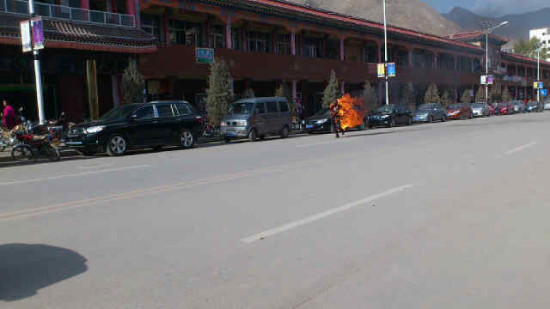Images accompany ICT report, ‘Storm in the Grasslands: Self-immolations in Tibet and Chinese policy‘, published December 10, 2012.
Click on the image for the largest possible resolution. Images are available for downloading and can be credited to ICT.
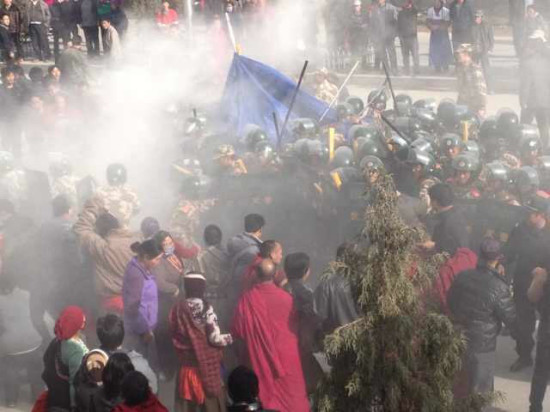
Troops are seen closing in on Dorje Rinchen’s body after he has self-immolated. Smoke can still be seen arising from his body and it is not clear if he was still alive at this point. Laypeople and monks are trying to protect him from being taken away by troops. In Tibetan tradition, it is important to protect the body of someone who has died for religious ritual and offerings in order to ensure an auspicious rebirth. Since the self-immolations began in Tibet in 2009, many Tibetans have taken great risks to retrieve the bodies of those who have self-immolated in order to carry out religious practice.
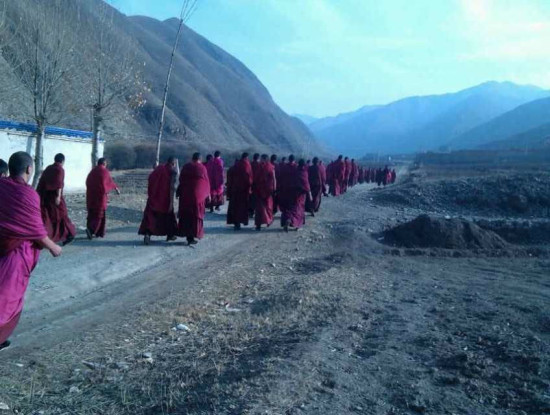
Monks from Labrang Tashikyil monastery walking to the village of Sayi, the home area of Dorje Rinchen located approximately 2 kilometers outside of Labrang. Initially prevented from going, the monks were eventually allowed to travel to Dorje Rinchen’s home to offer prayers following his death after self-immolating on October 23, 2012.
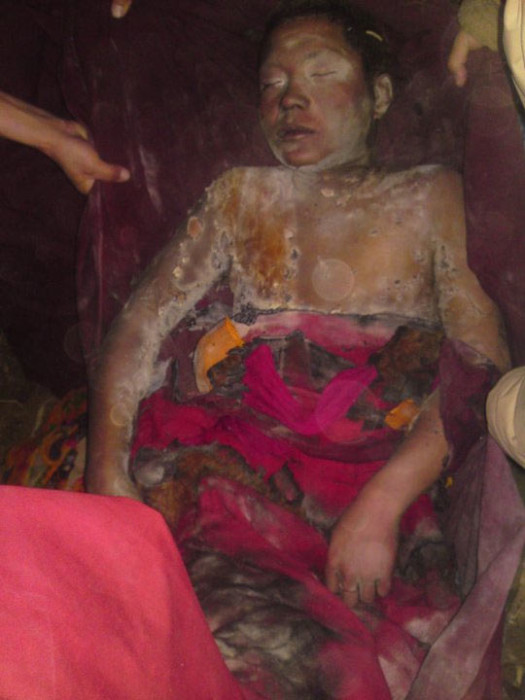
Phuntsog, a 20-year old monk, self-immolated on March 16, 2011, the 3rd anniversary of a protest at Kirti monastery in Ngaba in 2008 during which at least 10 Tibetans were shot dead. According to a witness of the protest, before he was stopped by police, Phuntsog shouted slogans including “May His Holiness the Dalai Lama live for 10,000 years!”
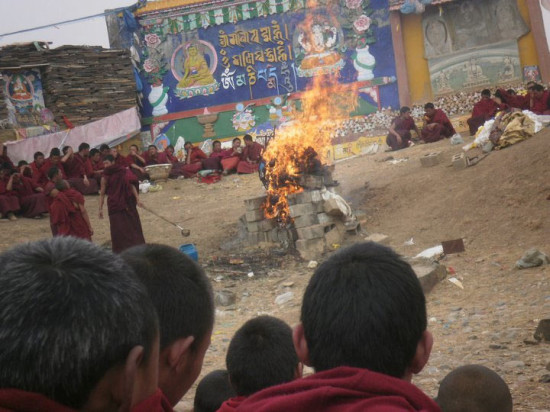
Monks gathered at Kirti monstery on March 18, 2011 to make offerings and pray for Phuntsog, who died after self-immolating on March 16, 2011. His body was then taken nearby for cremation. A Tibetan who was at the cremation told ICT: “It seemed to me that Phuntsog’s cremation became a focus for Tibetan people’s grief and sense of loss, as well as an expression of their solidarity and strength as Tibetans. I took this picture as around 500 Tibetans converged on the hillside, monks and laypeople. They bore khatags, Tibetan white blessing scarves. The noise of their chanting the mantra dedicated to His Holiness rang in my ears. There were mothers carrying children, there were old men walking with a stick. People were crying, they were sharing their sorrow. It was as if there was nothing else for them to do. It felt as though my heart was breaking. Ever since then, I have not been the same person.”
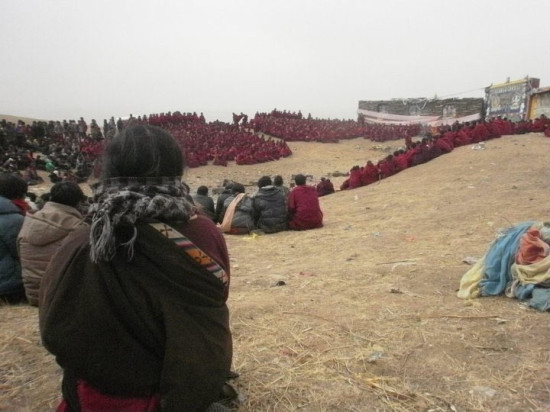
Prayer session at sky burial site. This photo was taken during the prayer session for Phuntsog at the sky burial site located over 3 kilometers away from Kirti monastery in Ngaba county. People followed in procession with Phuntsog’s body from Kirti monastery to the sky burial site, chanting “Om Mani Padme Hum.” In this image we can see monks sitting in the upper area and lay people sitting below, praying for Phuntsog. Phuntsog’s body was cremated at the sky burial site on March 18, 2011. The flame is visible in the top right of the photo.
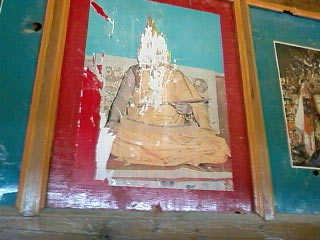
Photos of the Dalai Lama and other senior religious leaders at Kirti monastery in Ngaba county, Ngaba Tibetan Autonomous Prefecture, Sichuan province, were damaged following a raid on the monastery in early April 2008. Kirti monastery was at the center of the wave of protests in eastern Tibet when monks were joined by laypeople and schoolchildren in a major protest on March 16, 2008, calling for a free Tibet, with pictures of the Dalai Lama and Tibetan flags on display.
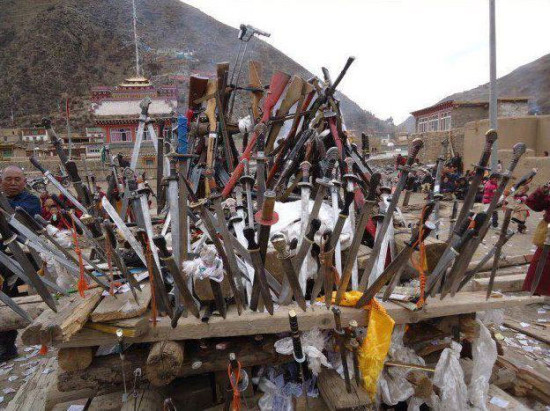
Tibetans have been at pains to demonstrate clearly their adherence to the Dalai Lama’s emphasis on non-violence. This image, from Dzamthang (Chinese: Rangtang), Ngaba in eastern Tibet, shows knives that have been handed in to a central public area to be destroyed as a symbolic demonstration of this intent.
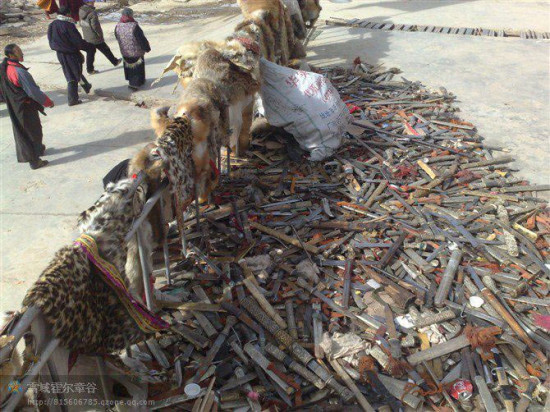
In a similar symbolic expression of non-violent intent, Tibetans have handed in knives to be destroyed along with wild animal pelts, in an area of eastern Tibet. This is also symbolic of a vow to quit internal strife and to stay united. The destruction and burning of wild animal furs as an expression of Tibetan loyalties was originally inspired by a statement made by the Dalai Lama during a major religious festival in India in 2006 in which he said he felt “ashamed” when he saw Tibetans wearing the pelts of endangered animals such as tigers or leopards.
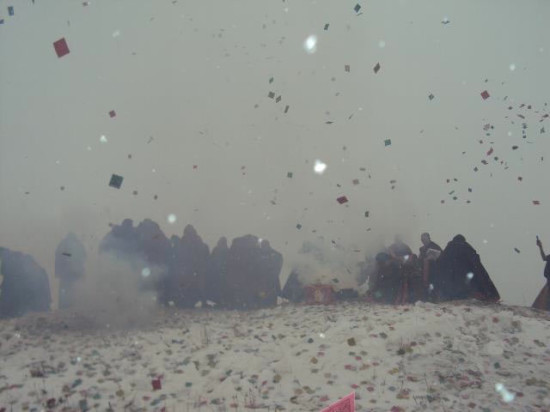
There has been an upsurge in Tibetan expressions of their national identity, often through the commemoration of significant anniversaries and actions rooted in Tibetan religious culture. Earlier this year, monks (pictured) at the historic Lamu Dechen monastery in Chentsa, Malho, marked the March 10 anniversary of the 1959 Tibetan Uprising (and the 2008 protests) with a bold and peaceful religious commemoration including the burning of incense, and a strict lockdown was imposed by the authorities. Monks at Lamu Dechen created butter sculptures (a traditional form of offering) of the Dalai Lama and also of the Tibetan ‘snow lion’ flag, which is banned in Tibet.
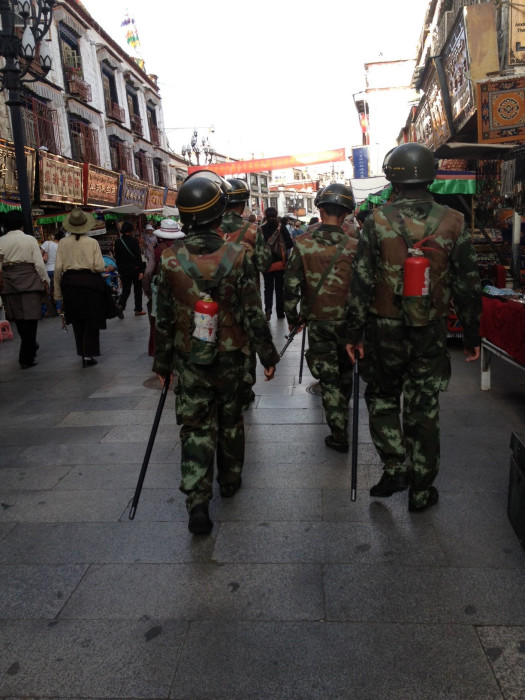
People’s Armed Police, equipped with fire extinguishers, patrolling the streets of Lhasa. Two young Tibetan men, Dargye and Dorje Tseten, self-immolated and died outside one of Tibet’s holiest shrines, the Jokhang temple in Lhasa, on May 27, 2012.
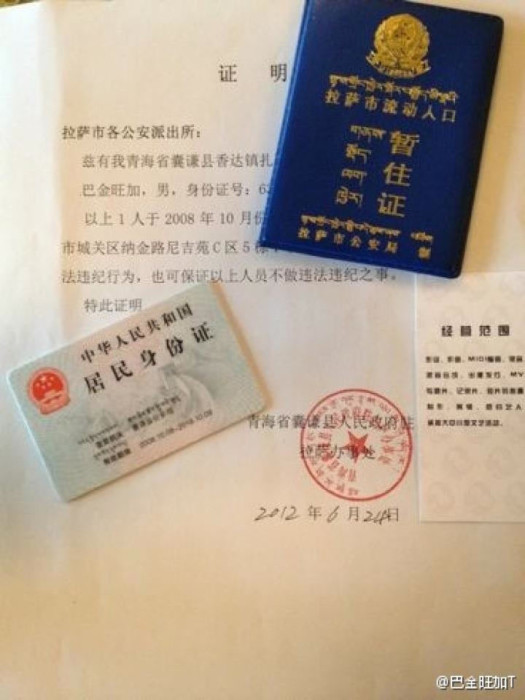
While requirements for entering Lhasa were already stringent, on March 1, 2012 authorities in the Tibet Autonomous Region (TAR) began requiring any ordinary citizen seeking to enter the TAR to show four different identity cards, and this image was posted by Tibetan writer Woeser on her blog. The consequences were devastating for Tibetans from the eastern Tibetan areas of Kham and Amdo. More than half of all Tibetans live outside the TAR in Tibetan areas of Qinghai, Sichuan and Gansu, but many of them live or work in Lhasa and large numbers travel there frequently on pilgrimage, as it is the religious and cultural centre of Tibetan Buddhism. There are no bars on Chinese businesses or Chinese tourists or migrants entering Lhasa.
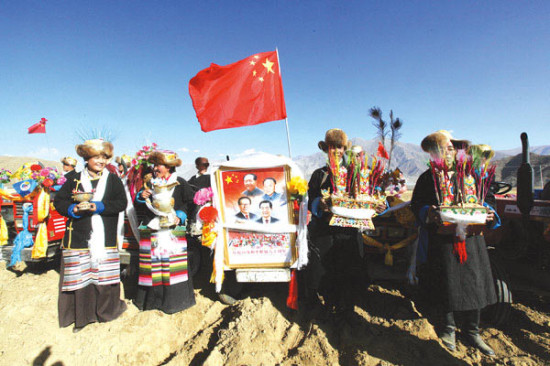
Tibetans in traditional dress bear aloft an image of the Chinese leaders Mao, Deng Xiaopeng, Jiang Zemin and Hu Jintao together with butter sculptures. Butter sculptures, traditionally created in Tibetan monasteries as an act of devotion, would normally be carried together with thangkas (Tibetan religious paintings or wall-hangings). This image appeared in the Chinese state media.
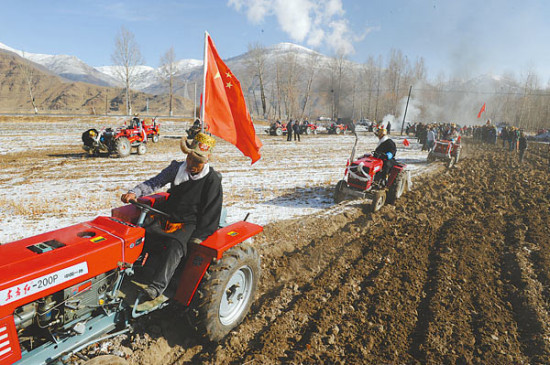
Images, such as this one of Tibetans ploughing the fields in rural areas with red Party flags on their tractors, have appeared in state media and reflect the Chinese government’s strategy of actively establishing Party presence in rural areas as the answer to ‘instability.’ This has led to a more pervasive and systematic approach to ‘patriotic education’ and a dramatic increase in work teams and Party cadres in rural areas of the Tibet Autonomous Region as well as well-resourced initiatives in the cultural and social sphere in Lhasa and other urban areas.
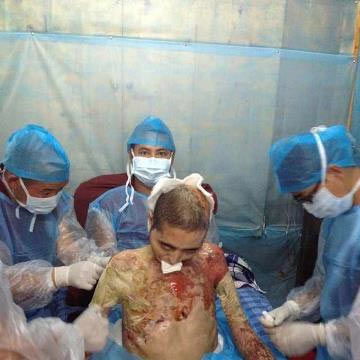
Jamyang Palden receiving medical treatment following his March 14, 2012 self-immolation protest near Rongpo monastery in Rebkong. He later died from his injuries.
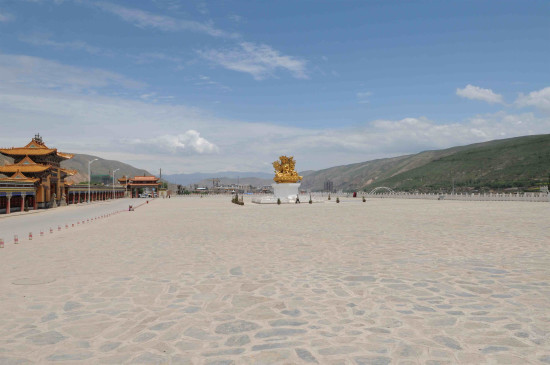
Dolma Square in front of Rongpo monastery in Rebkong county, Malho Tibetan Autonomous Prefecture, Qinghai, where Jamyang Palden, Chagmo Kyi and Jinpa Gyatso set themselves on fire and died.
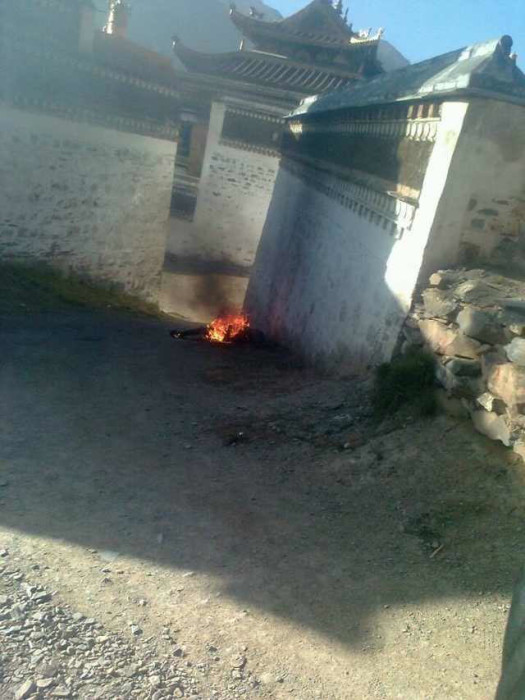
The body of Dhondup is seen still in flames near a side wall of Serkhang temple at Labrang Tashikyil monastery.
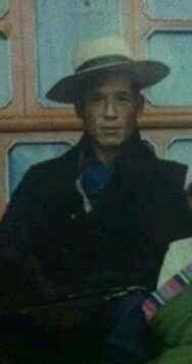
Dhondup, a Tibetan man in his sixties, died after setting fire to himself on the morning of October 22, 2012 at the side of Serkhang (meaning golden house or temple) temple in Labrang Tashikyil monastery, located in Kanlho Tibetan Autonomous Prefecture, Gansu.
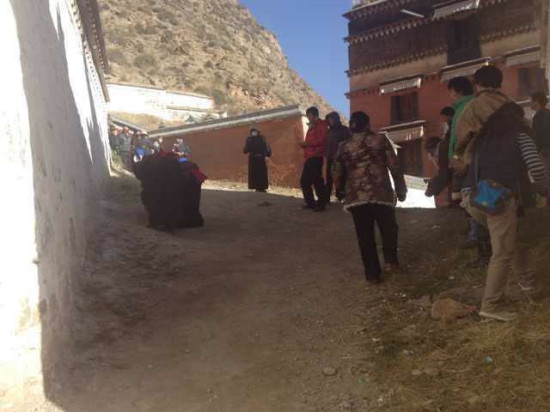
After security personnel took away the body of Dhondup, who self-immolated on October 22, 2012, local Tibetans began offering khatags (Tibetan white blessing scarves) at the site of his self-immolation protest.
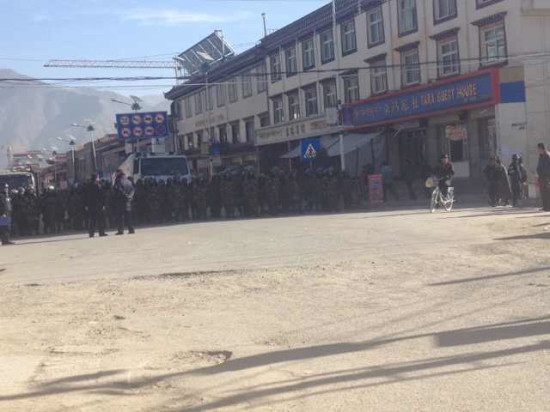
Security forces gathered on October 22, 2012 in the main street of Labrang, Sangchu county, Kanlho Tibetan Autonomous Prefecture, Gansu. Dhondup, a Tibetan man in his fifties, became the 57th Tibetan to self-immolate when he set fire to himself in protest on October 22, 2012 outside Labrang Tashikyil monstery.
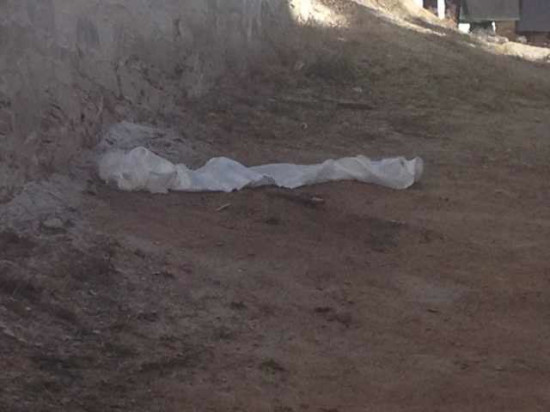
A khatag (Tibetan white blessing scarf) was placed on the site where Dhondup self-immolated and died near the entrance of Labrang monastery in the Tibetan area of Amdo.
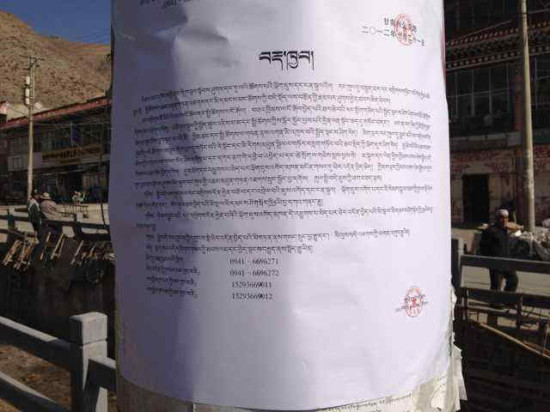
Chinese security authorities posted notices in the Labrang area offering substantial rewards for information about the “black hand” behind Tibetan self-immolations in Kanlho (Chinese: Gannan) Tibetan Autonomous Prefecture, Gansu province.
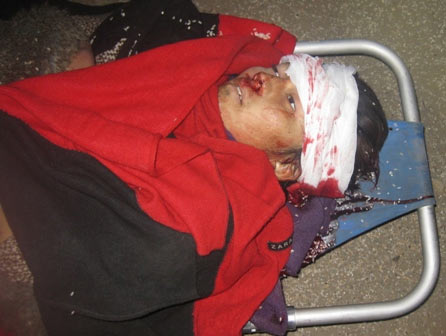
Ogyen, a 20-year old Tibetan student, was shot and killed after police opened fire into a crowd of Tibetans gathered in protest on January 26, 2012 in Dzamthang county, Ngaba Tibetan Autonomous Prefecture, Sichuan. The protest was in opposition to the detention of another young Tibetan, named Tarpa, who was taken into custody after posting leaflets stating that the self-immolation protests in Tibet were calls for Tibetan freedom and for the return of the Dalai Lama, and that the self-immolations would continue until authorities met these demands.
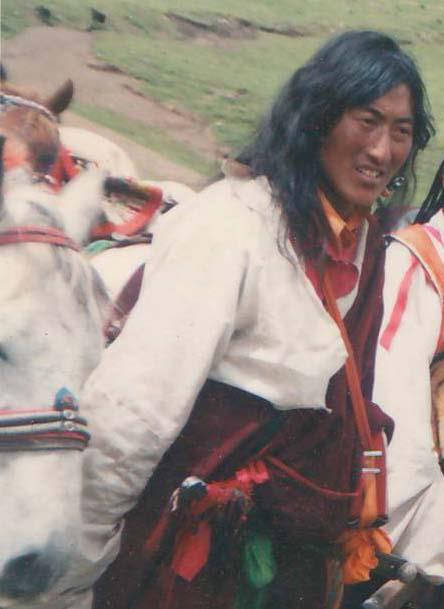
Yonden (pictured) was one of three Tibetans who were shot and killed (several others injured) when police opened fire on Tibetans who gathered to protest in Draggo county town in Kardze Tibetan Autonomous Prefecture, Sichuan (Tibetan area of Kham) on January 23, 2012, the first day of Chinese New Year. The incident followed the circulation of leaflets in the area saying that Tibetans should not celebrate the New Year in 2012 because of the self-immolations, and declaring an intention by the unnamed author of the leaflets to set fire to themselves at the time of Tibetan new Year (Losar, which occurred on February 22).
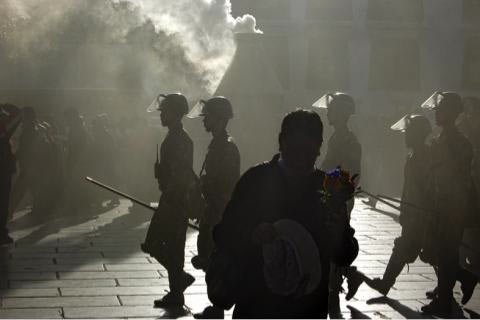
Troops are visible as Tibetan pilgrims gather at the Jokhang temple in Lhasa in September, 2012. At the Jokhang temple, one of Tibet’s holiest sites, Tibetan pilgrims face intense security, with a constant presence of troops and airport-style scanners now in operation.
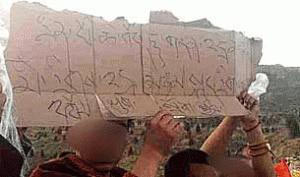
Monks holding a makeshift cardboard banner during Jinpa Gyatso’s cremation in Rebkong, Qinghai (Amdo) on November 8, 2012 which reads: “Let the Dalai Lama return to Tibet; equality for minorities and language rights.”
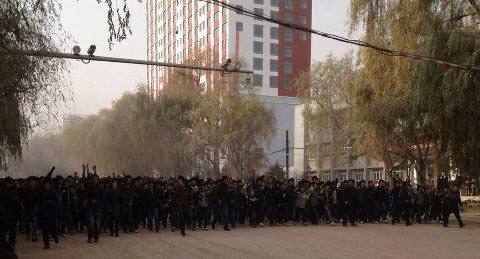
Thousands of Tibetans, including small children, marched on the streets of Rebkong in Qinghai on November 9 (2012) in a peaceful demonstration following emotional gatherings of Tibetans after two self-immolations in the area in the past two days.
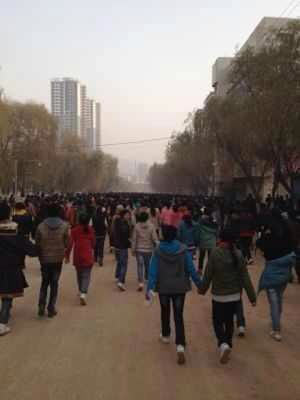
Schoolchildren and students demonstrated on November 9, 2012 in Rebkong (Chinese: Tongren), Qinghai, the Tibetan area of Amdo.
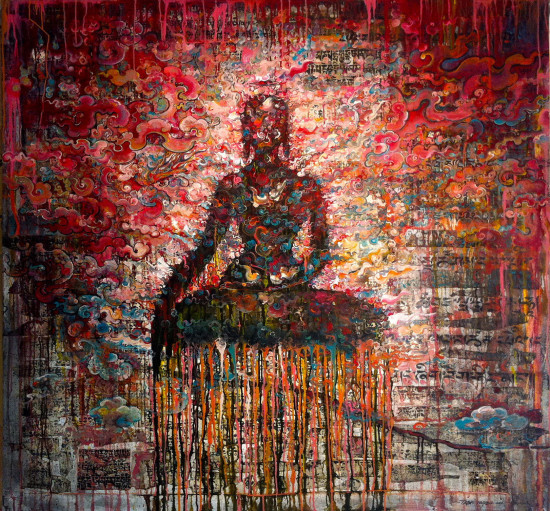
‘Self-immolation’ – a painting by Tashi Norbu, Tibetan artist based in Amsterdam, the Netherlands, by kind permission of the artist. The work expresses the dual hope that the self-immolators’ sacrifice will lead to their religious realization of ultimate reality, through burning away ignorance, and also ‘burn away’ the conventional reality of oppression. Tashi Norbu was born in Bhutan. www.tashinorbu.be
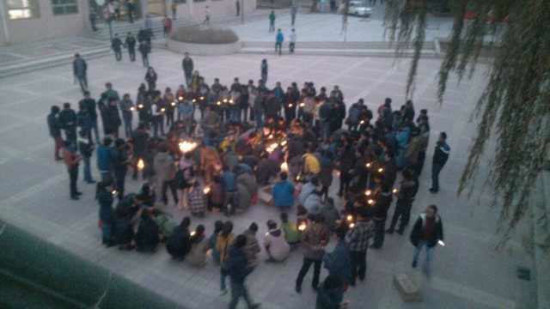
In the early evening of Friday, November 9, 2012, Tibetan students at the Qinghai Nationalities University held a candle-light vigil and said mantras for Tibetans who had self-immolated across Tibet.
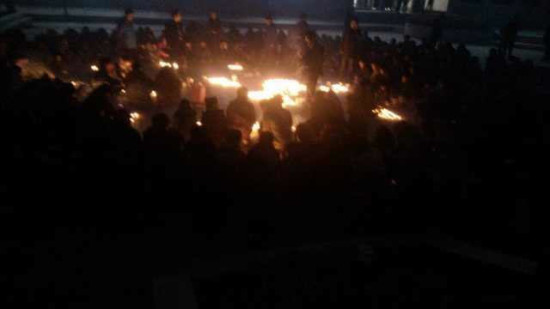
On November 9, 2012 students at the Qinghai Nationalities University held a candle-light vigil and said mantras for Tibetans who had self-immolated. The students’ peaceful gathering, which took place for about an hour, shows the impact of Tibetan self-immolations is spreading across segments of Tibetan society and also shows a willingness among Tibetans to demonstrate solidarity despite the build-up of security forces in Tibetan areas and inherent risk to their safety.
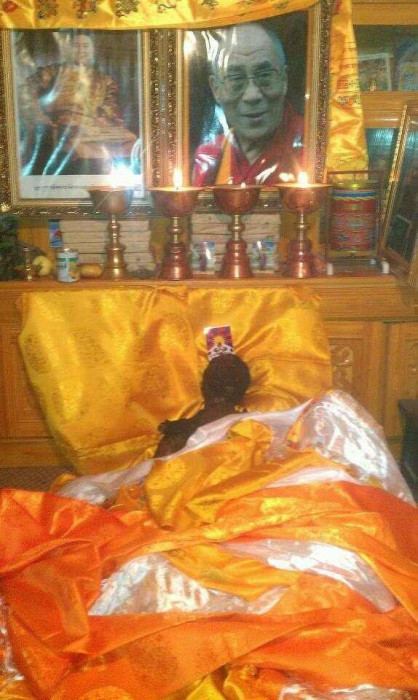
Wangchen Norbu’s body, draped in khatags (Tibetan white blessing scarves), following his self-immolation protest near Kangtsa Gaden Choepheling monastery in the Kangtsa area of Qinghai (Tibetan region of Amdo). Wangchen Norbu, aged 25, died after setting himself on fire on November 19, 2012 and his body was taken to the nearby monastery, where a large number of monks and lay people gathered to pay their respects and offer prayers.
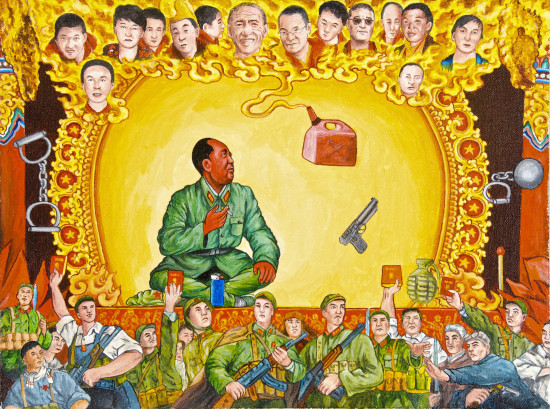
Tibetan artist Karma Phuntsok’s painting ‘Self Sacrifice in Tibet’ (2011) is a critique, through mimicry of a painting, ‘The Meeting of the General and the Monk in Kardze in 1936′, a painting that was a collaboration in 1980 between Tibetan painter Rigzin Namgyal and a Chinese painter whose name is Tibetanized as Mis Ting Kha’e. In Karma Phuntsok’s painting, Mao in military uniform looks towards a can of gasoline, with the oil connecting images of 13 Tibetans who had self-immolated amidst flames (there were 13 at the time the painting was created), including the first Tibetan to set fire to himself, Thubten Ngodrup (in April, 1998), and the first to self-immolate inside Tibet, Tapey. In each top corner there is a burning standing figure. Beneath Mao and the self-immolators are workers and soldiers holding aloft Mao’s Little Red Book, resonant of images from Cultural Revolution-era Socialist Realism propaganda. Leigh Sangster writes: “Karma Phuntsok was seeking to make the point that the self-immolations are evidence that the glorified Socialist future promised has failed to deliver. ‘Tibet is still the 1960s for Tibetans,’ says Karma Phuntsok, who links successive generations’ suffering.” (‘The Work of Art in the Age of Self-Immolation’ Leigh Sangster, Journal of the Society of Cultural Anthropology, April, 2012). Karma Phuntsok lives in Australia. http://www.karmaart.com/ Picture used by kind permission of the artist.


